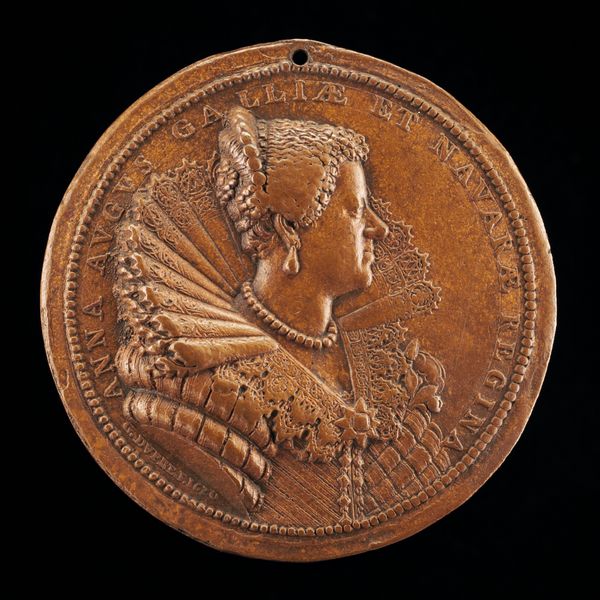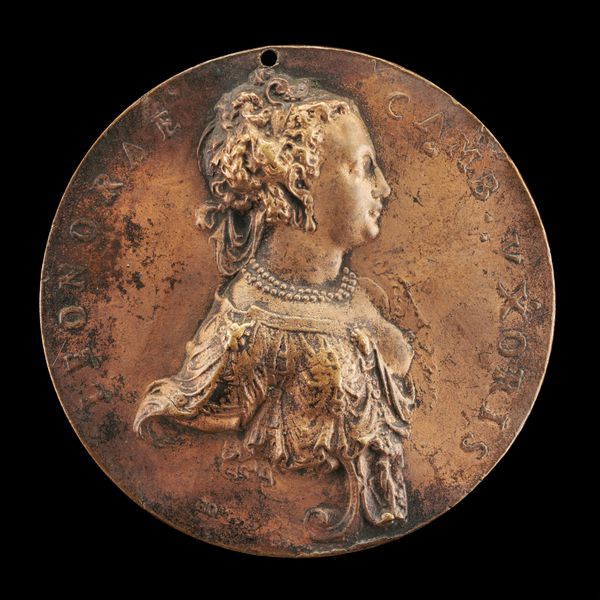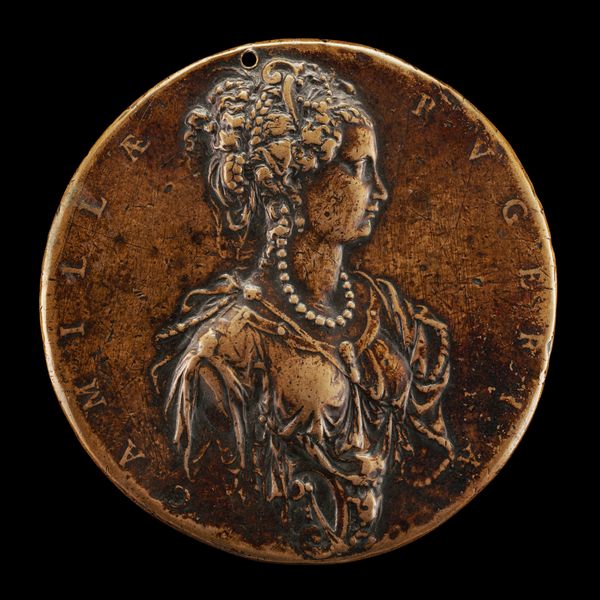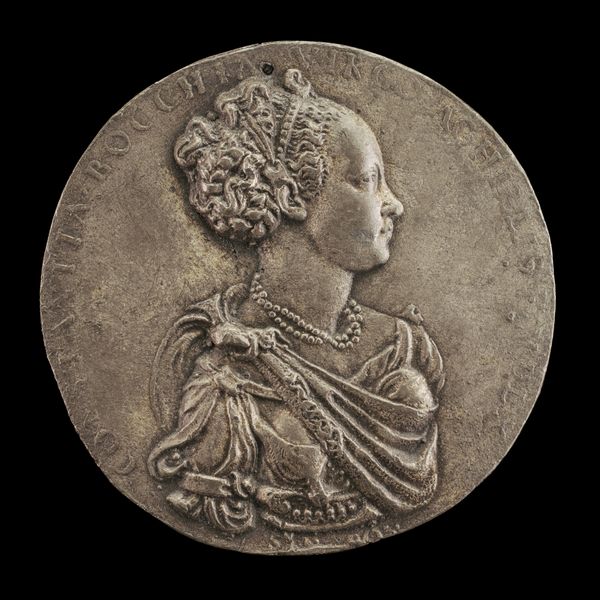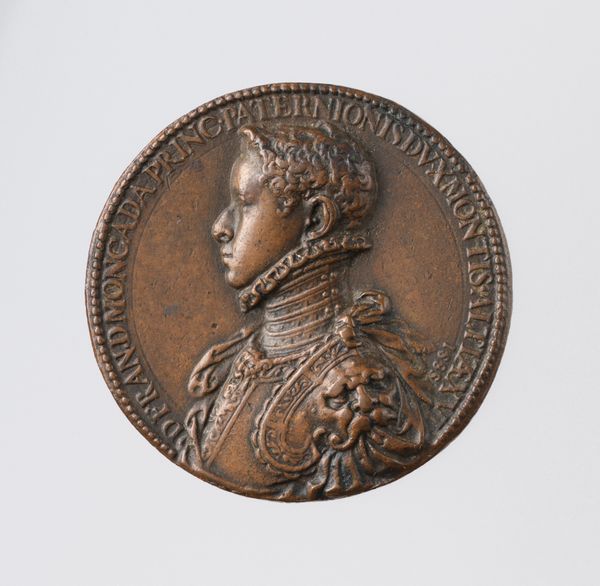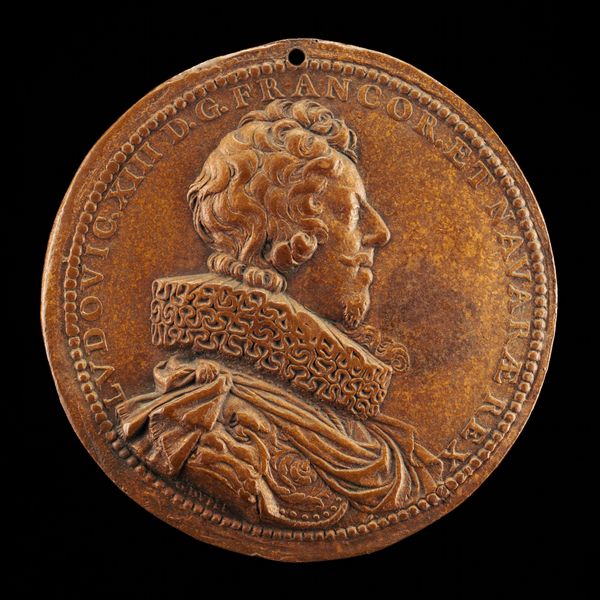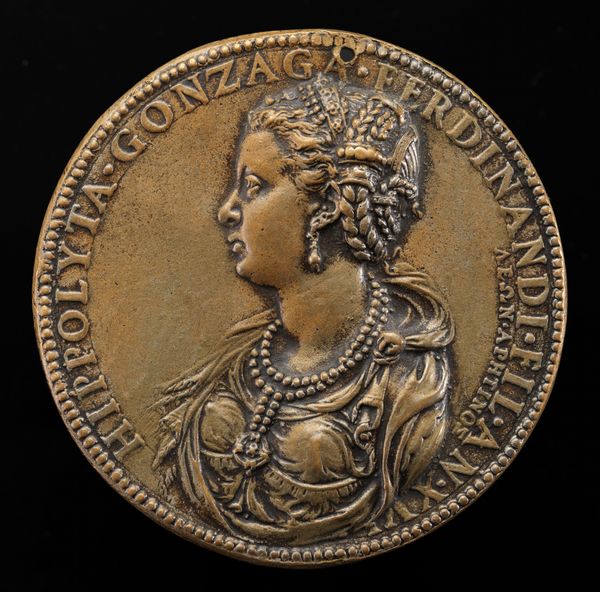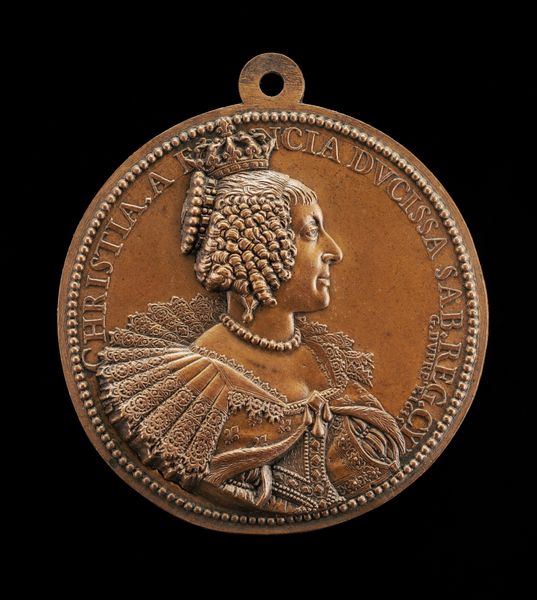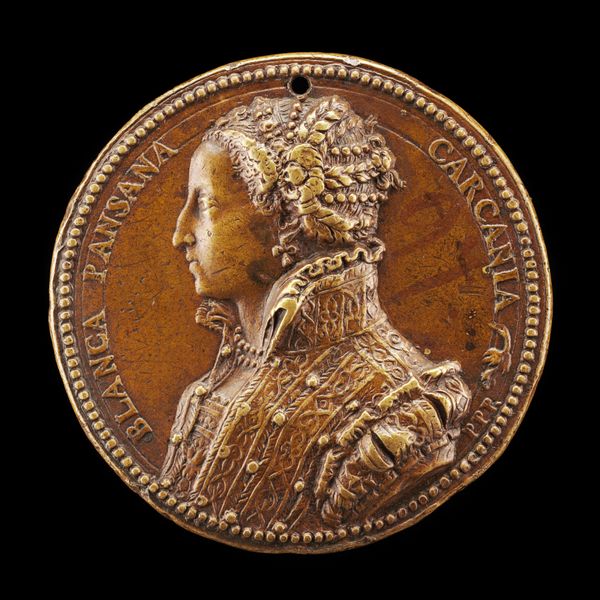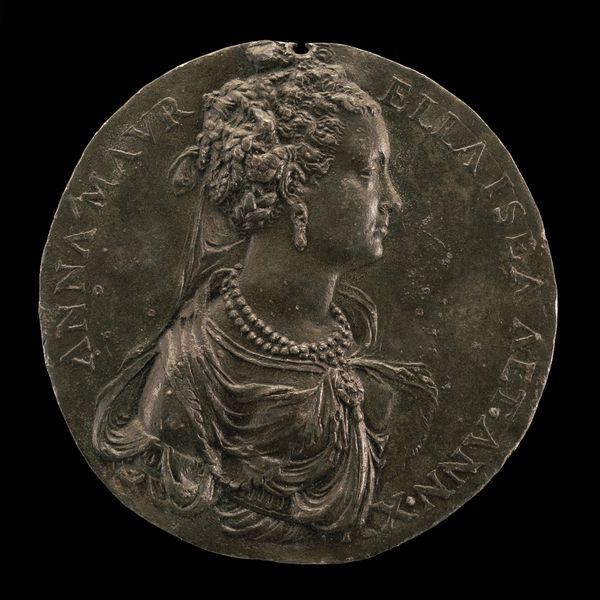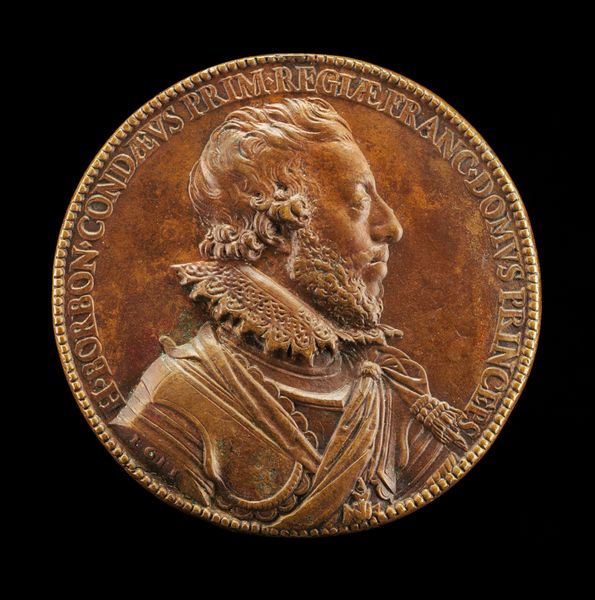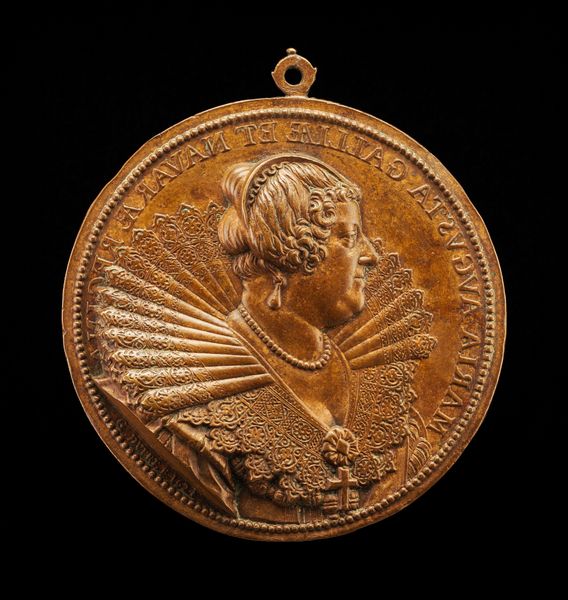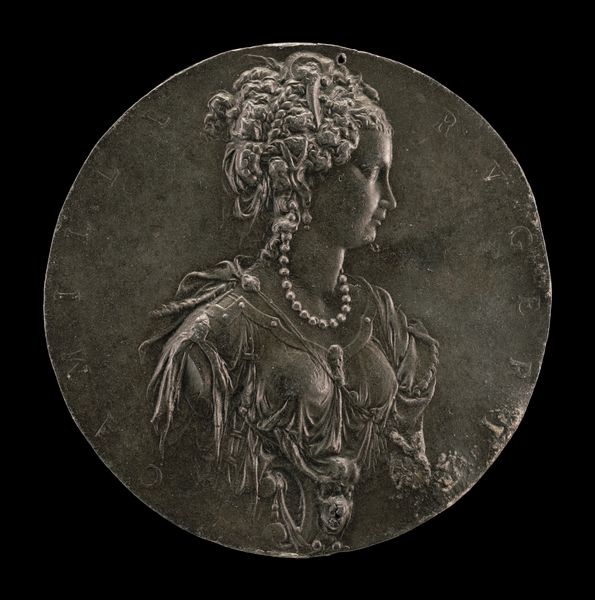
Maria Magdalena, Grand Duchess of Tuscany, Wife of Cosimo II de' Medici 1589 1613
0:00
0:00
metal, sculpture
#
portrait
#
medal
#
metal
#
sculpture
#
11_renaissance
#
sculpture
#
italian-renaissance
Dimensions: overall (diameter): 9.37 cm (3 11/16 in.) gross weight: 130.49 gr (0.288 lb.)
Copyright: National Gallery of Art: CC0 1.0
Editor: This medal, made of metal in 1613 by Guillaume Dupré, portrays Maria Magdalena, Grand Duchess of Tuscany. It feels very formal and rigid, a snapshot of power frozen in bronze. What does this portrait tell us beyond just her likeness? Curator: This medal offers us a glimpse into the visual language of power in the Renaissance. Consider how rulers deployed imagery to solidify their status. Medals like these weren't just personal keepsakes; they were tools of propaganda, distributed to key allies and displayed to project authority. The very material, bronze, lends a sense of permanence and importance. What do you notice about her attire? Editor: It’s incredibly elaborate! The details in the lace collar and the jeweled crown, everything speaks to immense wealth and status. It's almost overwhelming. Curator: Precisely. And look at the inscription encircling her image. This carefully chosen text reinforced her legitimacy and linked her to the powerful Medici family. Medals served a performative function in society. To whom and where do you think medals like this would have been significant? Editor: It would certainly make an impact on those receiving it or seeing it displayed. This helps define Maria Magdalena’s power beyond Tuscany, or for centuries later like now. Curator: Exactly. These medals became enduring symbols, subtly shaping perceptions and narratives across generations. Analyzing them, we move past mere aesthetics, towards the core of Renaissance political culture. Editor: So, it’s not just a portrait, but a carefully constructed statement. Curator: Indeed. It shows how art became essential to the political stage, projecting and negotiating power in a rapidly changing world.
Comments
No comments
Be the first to comment and join the conversation on the ultimate creative platform.
